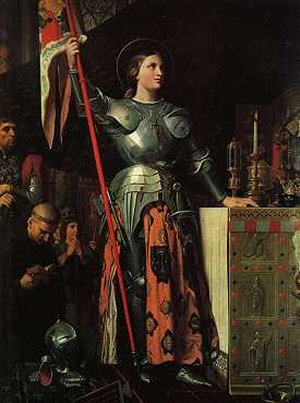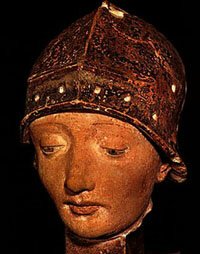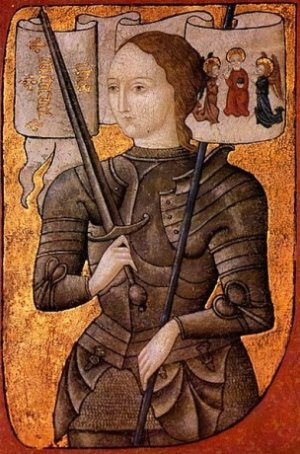Her father wanted her to get married, but she said she wanted to follow God's calling. She didn't want to marry - and she didn't.
During the battle at Orleans, she was struck by an arrow. She pulled the arrow out and continued to lead.

Joan at the coronation of Charles VII
by Jean Auguste Dominique Ingres (1854)
by Jean Auguste Dominique Ingres (1854)
News of her courage began to be told, and sometimes people would just give up rather than face her in battle.
She dressed in men's clothing and cut her hair short so she would not be recognized on the open roads.
Once, when she was imprisoned, she threw herself out of a prison tower. She fell 70 feet to the ground, but she didn't die. They put her back in prison and then in a few months she was put on trial. They said she was guilty of witchcraft* and of wearing men's clothes.
She died as a martyr.* She was burned to death.
Later there was another trial and they said she was not guilty, but that she was innocent.* She has even been declared a saint* by the Roman Catholic church.
There is disagreement about her education. Some people say she never did learn to read nor write, but you can look at copies of letters that others say were written by her.


This biography by Patsy Stevens, a retired teacher, was written in 2001.


 A frequent question:
A frequent question: